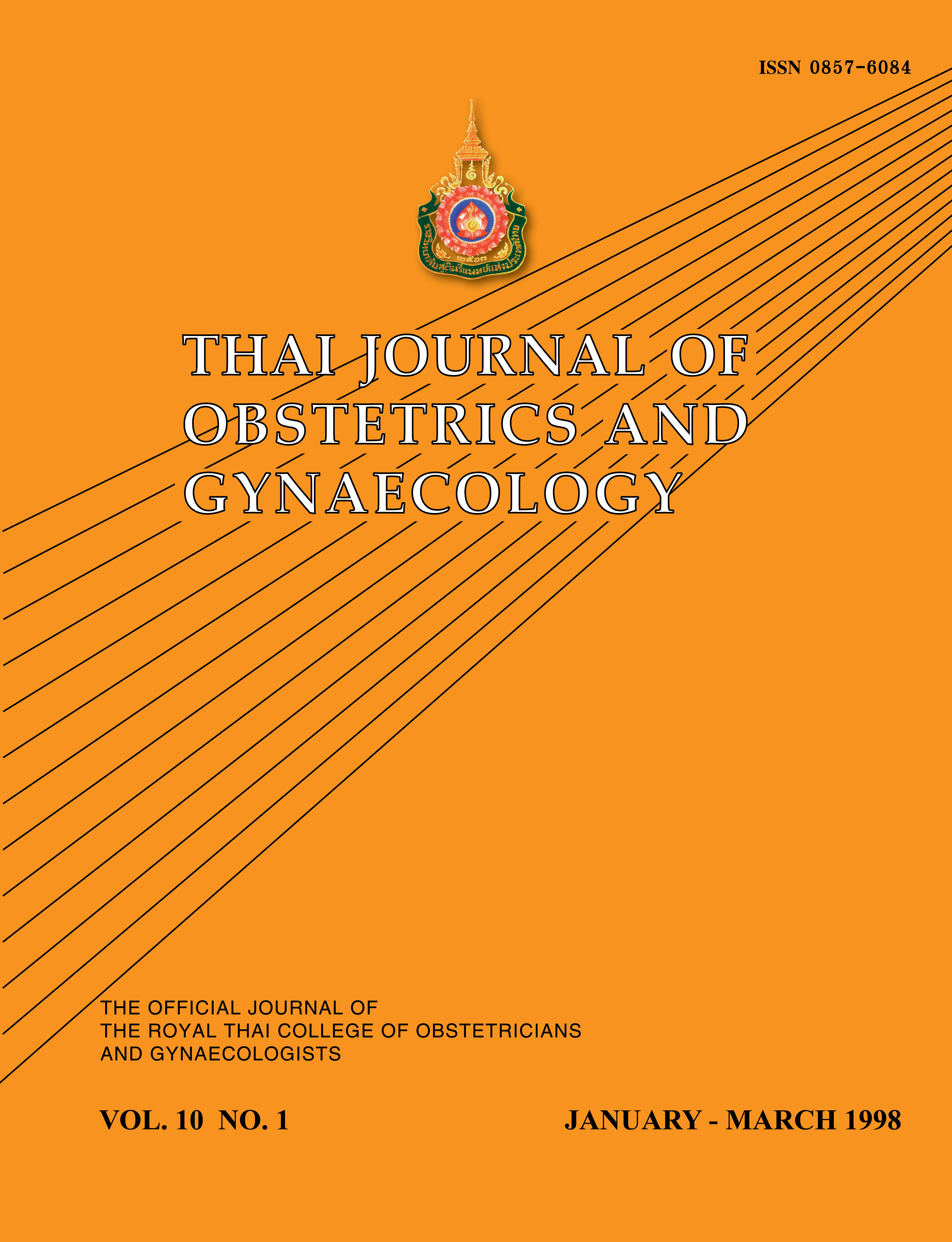Sonographic Diagnosis of Fetal Facial Cleft : How Should We Approach?
Main Article Content
Abstract
Objective to establish an appropriate sonographic approach for the diagnosis of fetal facial clefting.
Subjects From September 1996 to September 1997, 94 pregnant women were recruited. Fetal biometry and anatomic survey were performed. Fetal facial scanning was first scanned with conventional coronal plane. The transducer was then rotated to a more axial plane at the level of the upper lip to detect any defect presented. Fetal outcomes were obtained from neonatal results or autopsy findings.
Results A coronal plane demonstrated 8 positive cases of facial clefts. Combining coronal and axial planes revealed only 3 positive cases. Neonatal outcomes revealed 3 facial clefts which were consistent with the ones diagnosed using both coronal and axial planes. The sensitivity and specificity of coronal plane alone in detecting cleft lip were 100% and 94.25% respectively. The sensitivity and specificity using both coronal and axial planes were both 100%.
Conclusion Incorporation of an axial plane to a coronal plane is recommended for establishing the diagnosis of fetal facial clefting.
Article Details

This work is licensed under a Creative Commons Attribution-NonCommercial-NoDerivatives 4.0 International License.


